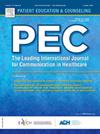Cancer care telehealth access needs in underrepresented patients: Development and implementation of the pragmatic access to telehealth needs assessment survey
IF 2.9
2区 医学
Q2 PUBLIC, ENVIRONMENTAL & OCCUPATIONAL HEALTH
引用次数: 0
Abstract
Background
We developed and implemented the Access to Telehealth Needs Assessment Survey (AcTNAS) based on Five A’s of TelEquity (Awareness-Application, Agency, Attitude, Accessibility, and Accommodation) that we created.
Methods
We iteratively developed the AcTNAS in English (mid 2021-early 2022) and transcreated (culturally and linguistically adapted) it into languages spoken in the service area. Women with breast cancer in safety net hospital and academic medical center cancer clinics in New York City completed the AcTNAS.
Results
Participants (N = 441) self-identified as foreign-born (77 %, n = 338), Black (56 %, n = 222), and Hispanic (36 %, n = 158). Most preferred speaking English (69 %, n = 306) or Spanish (27 %, n = 118). The AcTNAS assessed telehealth Awareness-Application (21 % did not know about the patient portal; 57 % had never participated in video telehealth), Agency (52 % were “not good with technology”), Attitude (voice-only [57 %] and video [51 %] appointments not as good as in-person appointments), Accessibility (38 % without good telephone service, 8 % no Wi-Fi/plug-in/public internet access), and Accommodation (50 % needed telehealth connection assistance). Insurance status (p ≤ .009) was associated with a prior televisit. Age (p < .001), education (p < .001), region of origin (p = .001), ethnicity (p = .028), and language (p < .001), were associated with prior portal usage.
Conclusion
AcTNAS administration helped identify telehealth access needs among underserved patients with cancer.
代表性不足的患者的癌症护理远程保健获取需求:开发和实施实用的远程保健获取需求评估调查
我们开发并实施了基于我们创建的五个远程公平A(意识-应用、代理、态度、可及性和便利)的远程医疗需求评估调查(actas)。方法采用英语(2021年年中- 2022年初)迭代开发actas,并将其转换为服务区域使用的语言(文化和语言适应)。纽约市安全网医院和学术医疗中心癌症诊所的乳腺癌妇女完成了AcTNAS。ResultsParticipants (N = 441)自认为外国出生(77 % N = 338),黑色(56 % N = 222),和西班牙裔(36 % N = 158)。大多数人喜欢说英语(69 %,n = 306)或西班牙语(27 %,n = 118)。AcTNAS评估了远程医疗意识-应用(21% %不知道患者门户;57 %从未参加过视频远程医疗)、机构(52 %“不懂技术”)、态度(语音预约[57 %]和视频预约[51 %]不如面对面预约)、无障碍(38 %没有良好的电话服务,8 %没有Wi-Fi/外挂/公共互联网接入)和住宿(50 %需要远程医疗连接协助)。保险状况(p ≤ .009)与先前看电视有关。年龄(p & lt; 措施),教育(p & lt; 措施),原产地地区(p = 措施),种族(p = .028),和语言(p & lt; 措施),与之前的门户使用情况有关。结论actnas管理有助于识别服务不足的癌症患者的远程医疗访问需求。
本文章由计算机程序翻译,如有差异,请以英文原文为准。
求助全文
约1分钟内获得全文
求助全文
来源期刊

Patient Education and Counseling
医学-公共卫生、环境卫生与职业卫生
CiteScore
5.60
自引率
11.40%
发文量
384
审稿时长
46 days
期刊介绍:
Patient Education and Counseling is an interdisciplinary, international journal for patient education and health promotion researchers, managers and clinicians. The journal seeks to explore and elucidate the educational, counseling and communication models in health care. Its aim is to provide a forum for fundamental as well as applied research, and to promote the study of organizational issues involved with the delivery of patient education, counseling, health promotion services and training models in improving communication between providers and patients.
 求助内容:
求助内容: 应助结果提醒方式:
应助结果提醒方式:


